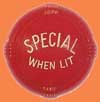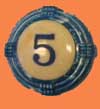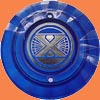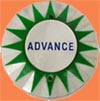Russ Jensen Memorial | Russ Jensen Articles | Home Page | About Us | Reference Material | Historical Research | I Buy Paper | Baseball Page | Pinball Conversions | Repair Service | Shows | Pinball Links | Pinball Model List | Pinball History
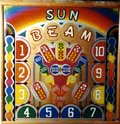
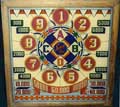
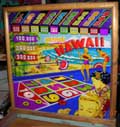
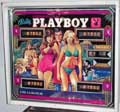
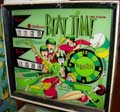
Pinball Conversions
Conversion Games
Introduction
Several people, Russ Jensen, Terry Cumming, to name two, have done extensive research and written a lot about the history of converting an existing model of a pinball machine into a different game. The reasons for making this type of change vary with the times. But, they are usually prompted by one of two reasons: first to provide the operator a means to save money, and second to provide the operator new games when none were available.
Russ’s article Pingame Conversions was originally published in Coin Slot Aug/Sept 1983. This article Covered all types of conversions from early board replacements made during the infancy years of pinball in the early 1930’s through the time of the publication of the article. He included all types of conversions and even included some arcade games.
Terry has published two editions of his book Pinball and World War 2. His second edition was updated in 1998. This publication includes information exclusively about pinball games and pinball conversions made just prior to the War. And includes games up through 1946. This book includes extensive photos and related information about the pinball industry in and around the time of World War 2.
The intent of this article is to expand the information available about Pinball conversions and revamps produced between 1936 and 1946. This date ranged was modified from the original dates I selected (1937 – 1942) to provide a broader understanding of the explosion of converted and revamped games produced because of the ban on production of amusement games by the War Production Board (WPB) at the onset of the involvement of the US in WW2. Additionally, I hope to solve some mysteries and correct some mistaken assumptions that have occured over the years.
The main source of information used to create this article is my personal collection of Billboard Magazines and other original primary source documents in my collection. I began my data gathering and accusition of this type material in preparation for writing my Masters Thesis The History of Pinball published in 1976. I continued to collect Billboard magazines published between 1930 and 1960 as a primary source of information on the pinball industry . My collection now numbers around 1200 issues. I also used many other coin op publications form the time period covered. For a complete list of documents please see the Bibliography. I have also relied heavily on Terry Cumming’s Book “Pinball and world war 2” to create the list of games and for additional Billboard references that I had not uncovered. The Internet Pinball Database was also extensively referenced to collaborate and modify existing references and compare images of games.
I started this research project when a game came up on ebay that we had
no recorded data for. The game is called Click and seems to be
manufactured by Stoner. Several people did some research on the Click
game with some of us suggesting it is a conversion of a Stoner game and
some of us maintaining that it was the last game made by Stoner prior to
the War Production Board’s ban on the manufacture of all non essential
new amusement machines after the bombing of Pearl Habor. So, I started
by focusing on games made from 1938 thru 1942. This, I thought, would
cover the time period where the Click game seemed to fall. My first
task was to compile a list of ALL known games that were considered to be
conversions of another game. I started by asking Don to compile a list
of all the games in this time period, that have our note CO which stands
for Conversion Of. I then crossed this list with Terry Cumming’s data
in his book Pinball and World War 2. This resulted in a list of 42
machines. After doing some research and having several conversions with
Don, I decided to expand the date range to cover the dates 1936 to 1946.
The process to compile a new list of games was the same as the first
list, but I now have a list of 176. As can been seen by using some
simple math, expanding the date range from a five year time period to a
ten year span, more than tripled the number of converted games produced.
Because of the time to check each resource for each game as well as
search through each issue of related original publications, this article
will have to be updated as major sections are completed. My first
section will be to focus on the more prolific companies that made
revamps, and the machines they made. These companies are:
GLICKMAN
INDUSTRIES / CO.,
MARVEL MANUFACTURING COMPANY,
SULLIVAN-NOLAND
ADVERTISING CO,,
UNITED MANUFACTURING CO.,
VICTORY SALES CO.,
VICTORY GAMES, and,
WESTERHAUS AMUSEMENT CO.
The Glickman Company seems to be one of the early companies that started to convert games, both during the war period and prior to the war. Their first foray into making conversions was late in 1937. They offered conversions of both Bally Bumper and Skipper. The earliest ad that I found was for Poko-Lite a converted Bumper game that appeared in an Automatic Age magazine that was dated Dec. 1 1937 on page 98. This ad offered to “convert” your Bumper into a game called Poko-Lite. “Send in your Bumper game prepaid and we will send you back your game completely converted to Poko-Lite.” $16.50! And if you choose to, you could purchase a complete POKO-LITE, with out a trade in, for $29.50 COD. Almost the same ad appeared one month later (Jan. 1 1938 pg 72) with only 3 changes. First they now included Skipper in the ad. Second, the new ad maintained the $16.50 price for a Bumper conversion trade in, but the price for Poko-Lite without a trade in dropped to $23.00! And, the third change was a Skipper POKO-LITE with out trade in for $32.00. It must be remembered that Skipper is the Payout version of Bumper. And Bumper was the revolutionary new Pinball machine that won Bally accolades and awards for their innovation in developing the spring bumper. This innovation in design was comparable to the innovation in the development of the flipper in 1947 except it was 1936! This was a wildly successful game and probably why the Glickman Company choose to make conversions in a mere 12 months after its introduction. Poko-Lite must have been at least a partial success because in another six months Glickman Co. advertised another conversion. This time it was a conversion for Skipper only, and took advantage of the payout feature of Skipper. The ad for TREASURE appeared in the July 1937 issue of Automatic Age on page 86. It boasted of several innovations: “One Big Award $1.00 up to $3.25,” “Cabinet completely painted over.” Playing field completely changed” and “New Back Panel Glass called TREASURE.” The Cabinet side art shows the bird shape replaced with a double line design with a curl toward the back of the cabinet. The playing field has been repainted hiding the compass rose design around each spring bumper and replacing it with a larger black circular design with plain circles around each. The playfield addition of several horseshoe springs supported at each end by a post would appear to help keep the ball in play. And the over all backglass design, while unchanged because of the rear projection windows, now has TREASURE displayed across the TOP of the glass. So the Glickman company set a president for the what “conversion” of pinball games was considered to include.
I have made a search of all the Billboards that I own in the 1938 to 1942 searching for any reference to this somewhat obscure company. I searched for their name in Coin Machine Show participant lists. Glickman did not participate in the shows prior to 1942. The first Glickman ad that I have been able to locate in the original search time period from 1938 to 1942 was an ad run in Billboard on Nov. 29, 1941 on page 110. In this rather cryptic ad starting with “DEAR EDDIE” it is now obvious that the Glickman Co. was anticipating converting games prior to the WPB’s ban on amusement game production! Glickman Company, now calling itself Glickman Industries ran their first advertisement for conversion games in the Billboard issue dated Jan 24, 1941 on page 78. This was just 48 days after the bombing of Pearl Harbor and just 36 days after the WPB’s initial ban of 75% production cutback that went into effect
Russ Jensen Memorial | Russ Jensen Articles | Home Page | About Us | Reference Material | Historical Research | I Buy Paper | Baseball Page | Pinball Conversions | Repair Service | Shows | Pinball Links | Pinball Model List | Pinball History
Copyright ©2002-2025 by Mueting Electronics Co. All rights reserved. Reproduction or distribution prohibited.
Last updated 1/22/2025


